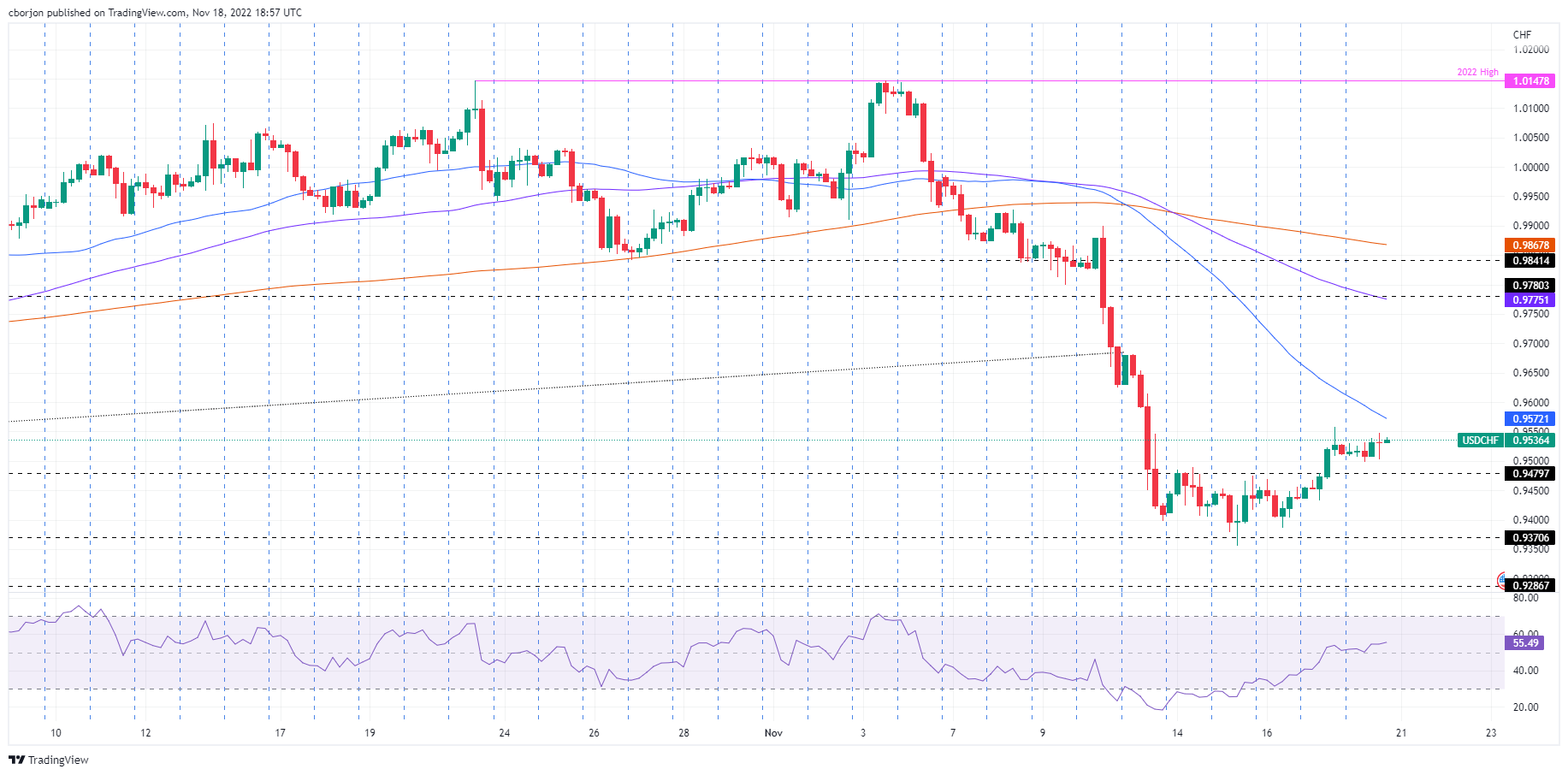- USDCHF Price Analysis: Trims last week’s losses, eyeing 0.9600
Notícias do Mercado
USDCHF Price Analysis: Trims last week’s losses, eyeing 0.9600
- The USDCHF is set to end the week with gains of more than 1%, but the bias is bearish.
- Short term, the USDCHF bottomed around 0.9350-0.9450, with buyers eyeing 0.9600.
The USDCHF advances for the fifth straight day after tumbling in the last week by more than 5% after a softer-than-expected US inflation report. However, hawkish commentary by Federal Reserve (Fed) officials throughout the week bolstered the US Dollar (USD) to the detriment of the Swiss Franc (CHF). At the time of writing, the USDCHF is trading at 0.9536, above its opening price by 0.26%.
USDCHF Price Analysis: Technical outlook
The USDCHF daily chart portrays the pair as downward biased. Based on last week’s price action, the USDCHF plunged below the 50, 100, and 200-day Exponential Moving Averages (EMAs), while the Relative Strength Index (RSI) pushed all the way down toward oversold conditions.
Once the USDCHF reached a fresh multi-month low of around 0.9356, price action formed a candlestick hammer, and since then, the major rallied towards the current exchange rate. Nevertheless, the bias remains intact, as the RSI exited from oversold conditions but remains at bearish territory.
Short term, the USDCHF 4-hour chart displays the major bottom around the 0.9350-0.9480 area. On Thursday, the USDCHF broke upwards, reaching a weekly high of 0.9557, but the major is consolidating around the 0.9500-0.9559 area. If the USDCHF clears the top, the next resistance would be 0.9600, followed by the November 11 daily high at 0.9681, ahead of 0.9700.
USDCHF Key support levels lie at the psychological 0.9500 figure. A breach of the latter would expose the November 17 daily low at 0.9432, followed by the November monthly low around 0.9356.

USDCHF Key Technical Levels